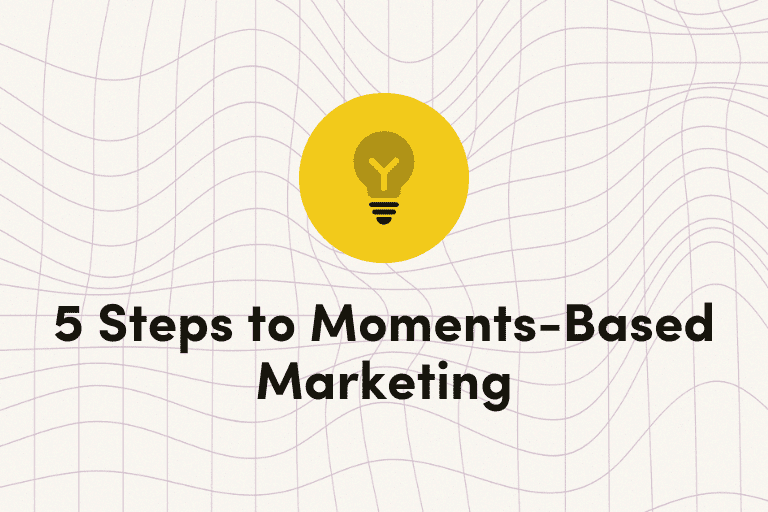How to Create a Customer Engagement Strategy
A customer engagement strategy is a plan to develop a best-in-class customer experience that positively connects your customers to your brand from their first interaction, throughout the entire customer lifecycle.
Rather than simply selling to your customers, you should focus on actively building a relationship with them. It's important to learn about each customer’s unique preferences and behaviors so you can develop personalized marketing content and promotional campaigns that will resonate with them on an individual level.
Building a strong relationship will result in higher customer engagement, which you can measure using a variety of metrics. High customer engagement can be determined by:
- Higher open rates for messages
- More pageviews
- More frequent site and app visits
- More time spent on site or in app
- More clickthroughs to site or app
- More sign ups
- More purchases
- Higher order value
- Higher customer satisfaction survey scores
- More referrals
Here are some guidelines for developing an effective customer engagement strategy.
Integrate All of Your Marketing Data
To know what your customers need from you, you’ll need to gather data from all of your different marketing sources so that you can create a 360-degree view of each customer. This includes demographic data, shopping preferences, purchase behavior, and browsing behavior across your website and app.
Use a centralized data platform like Iterable, which can pull both historical and real-time data from all of your marketing and e-commerce tools, including your CRM, web and app analytics, CDP, social media channels, and e-commerce platform.
Centralized data will give you the ability to develop a high degree of segmentation, so that you can identify unique audiences and create customized marketing campaigns that reach each customer where they are. In addition to developing planned segmented campaigns, you can use triggered messages to respond to your customers’ real-time actions, ensuring that you can leverage every interaction they have with your brand and deliver additional value.
Personalize Your Content
Delivering a truly engaging experience for your customers means creating a relevant experience for them at every stage of the buying cycle by responding to their cues with real-time personalized content based on their needs and desires.
For example, you might send out a welcome sequence that incorporates an introductory video showcasing how to navigate your brand’s website and take actions such as saving favorites or creating shopping lists.
From there, you’ll be able to segment your audiences based on how many have viewed the video and how many have gone to your website after viewing the video. For those who haven’t viewed the video within a certain number of days, you might send out a follow-up message via another marketing channel with a link to the video.
You can send a message to those customers who have viewed the video but haven’t visited the site, encouraging them to get started and including a coupon to incentivize them to make a purchase.
It doesn’t stop there. Now you can begin to segment your audience further through every interaction, developing varied workflows based on their behavior—opens or lack thereof, clicks, and visits to your website or app. Then, you can reach out with dynamically generated content that incorporates relevant content based on their past browsing behavior, purchases, or shared preferences. By ensuring that every interaction fills a real need, you can increase engagement at every stage, and re-engage audience members who may be at risk of churning.
Use Cross-Channel Marketing
A strong customer engagement strategy shouldn’t be based on one marketing channel alone. You should be marketing to your customers across all the channels they use in their day-to-day lives.
Further, your messaging across each channel shouldn’t duplicate other channels. Instead, you should be able to ensure that each message builds on the one that came before, based on how your customer responded to the previous one.
For example, if you’ve sent a marketing promotion over email, and a customer still hasn’t opened the email a day later, your sequence might send an SMS message linking to the same promotion as a follow up, including a “don’t miss this offer” message.
Or, if the customer had visited the site and clicked on a product, but abandoned the browse, your SMS message might include a link to the item with a “don’t miss out on this item” message that calls out its low inventory.
Using Iterable, your cross-channel marketing strategy can automatically optimize on a user-by-user basis, depending on which channels each customer most frequently uses and what device they use to navigate your site and app. For instance, if they’re logged into your app on their mobile device, you can prioritize a push notification to share your latest promotion rather than defaulting to email marketing.
Leveraging every marketing channel based on your customers’ behavior will help you ensure that they remain engaged, as you’re able to connect with them on the channels they use, delivering content they value.
The Benefits of a Strong Customer Engagement Strategy
By optimizing your messaging and channel marketing approaches on a customer by customer basis, you’ll be able to increase brand interaction at every step of the way.
Doing so can help you achieve bottom-line improvements, including increasing cross-sell revenue by 22%, upsell revenue by 38%, and order size by 5 to 85%, according to a study by Constellation Research.
By incorporating technology in ways that track and improve the customer experience and deliver personalized content that meets each customer where they are, you’ll be able to drive more value from each relationship, helping to improve revenue and create long-term customer loyalty.






























